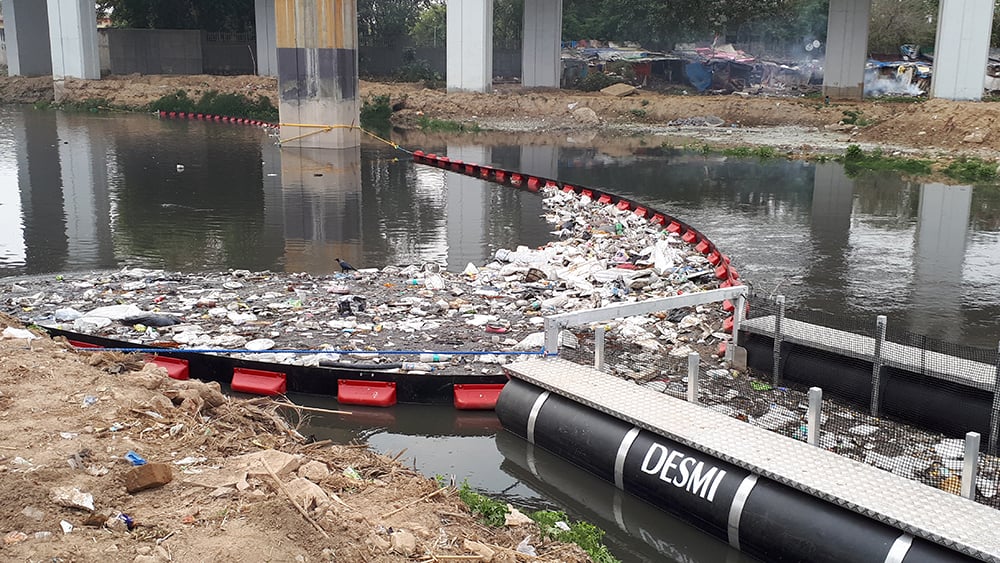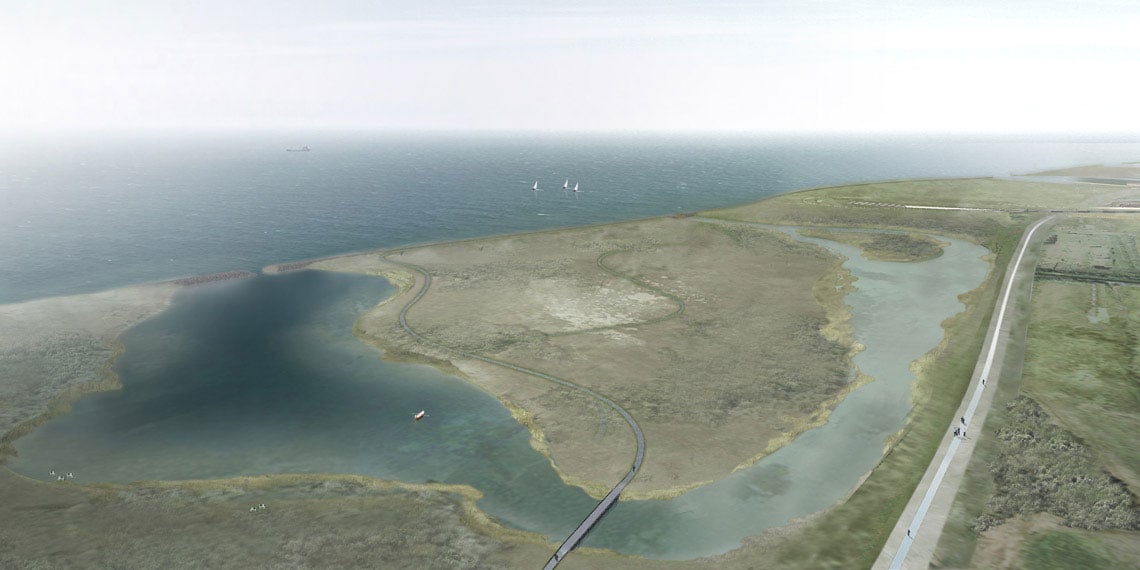News
Climate change adaptation
Flood prevention
Nature based solutions
+5
World Water Day 2018: nature-based solutions to tackle our water challenges


In honour of UN’s World Water Day 2018, we bring you 10 examples of water solutions that make effective use of nature’s own abilities and ecosystem and work to protect the natural environment.
1. Groundwater mapping
Many countries in the developing world are facing a water crisis with risks of losing its groundwater supply due to intrusions and over-extraction. In order to prevent intrusions from, for instance, saltwater and over-extraction from wells, sustainable groundwater mapping is needed. It requires good data collection and secure data management. SkyTEM is one such method functioning as an innovative and technologically advanced airborne geophysical system capable of mapping the top 500 metres of the Earth in fine detail and in 3 dimensions. Its survey shows otherwise unknown aquifers in areas and prevents unnecessary interventions from being made. Employed globally, the method is also used for mineral and oil & gas exploration as well as environmental and engineering investigations. Like any other solution, it is improved when supplemented by other measures, such as water sampling, pumping tests, groundwater head mapping and soil chemistry mapping. (Contact: SkyTEM)
- Download our white paper: “Greater water security with groundwater”
2. Water channels
Utilising nature’s own separation technologies to lower industrial water treatment costs, increase treated water quality and enable novel water treatment applications, cleantech company Aquaporin uses biotechnological principles in a technological context to separate and purify water. Their methods involve osmosis membranes to reach the highest flow of water and to enable high rejection of contaminants and low reverse back diffusion. Their solutions are good examples of how companies can apply commercial perspectives to nature’s own biotechnological abilities (Source/contact: Aquaporin)
3. Irrigation method to save water
In some areas of the world, up to 80 percent of the water consumption is spent on irrigating agricultural crops. A disquieting figure as clean water is in increasingly greater demand. Aarhus University has developed a new irrigation method - alternating irrigation or PRD (partial root zone drying) – involving watering the crops on first one side then on the other side. It stimulates the plants' own ability to save water by stimulating sensors in their root tips, which in turn stimulates production of the plant hormone abscisic acid. The hormone makes the plants' stomata close, which reduces evaporation from the leaves. According to researchers at the university, studies with potatoes have shown that the method can reduce water consumption by 20 percent without decreasing yield. (Source/contact: Aarhus University)
4. Rainwater harvesting
Using drinking water in toilets and for laundry or even for garden watering, carwash and cooling is a terrible waste of resources. Rainwater can instead be used to stop overexploiting drinking water resources. According to Danish company Regnvands Tanken, rainwater harvesting is one of the easiest ways to save earth's resources of drinking water. The company encourages collecting and reusing rainwater by using simple equipment such as a tank, a filter and a pump. In addition, such efforts will come in handy during flooding. (Source/Contact: RegnvandsTanken)
5. Climate tile – activating the pavement in water management
With increased urbanisation and the expansion of cities in and around larger cities, new areas need to adapt to the environment as well as the climate. The so-called ‘climate tile’ (Danish: Klimaflisen) is one such example where water management is an integrated part of its design. The tiles allow water to run down into an underground water management system in the form of fascines and contribute to a recreational area in urban spaces simultaneously. Built-in sensors monitor and distribute information to both citizens and water suppliers - for instance, what the given water levels are. It increases citizens’ knowledge of the city’s water conditions and their awareness of climate challenges and climate adaptation. (Source/contact: Klimaspring)
6. Optimising plants’ use of water and nutrients
In search for plants that are optimized for the future climate conditions, University of Copenhagen has designed a robot – the so-called PhenoLab. It is a fully automated, high-throughput phenotyping platform consisting of an automated plant care system combined with a scanning station for monitoring and measuring of plant growth and development. PhenoLab helps researchers get a better understanding of how the plants regulate their intake of water and nutrients. It may also be used to examine how microorganisms in the ground may help increase the growth of the plants and their defenses against disease. Learn more about how Phenolab works here. (Source: University of Copenhagen)
7. Using mussels to purify water
The Baltic Sea contains too many nutrients, which leads to algae blooming, oxygen depletion and fish death. As a part of the EU-financed interregional project Baltic Blue Growth, Orbicon is investating how mussel-production may extract some of these nutrients. As mussels are able to absorbe particles such as micro-algae that live on the nutrients and thus improve the water quality, they may very well be a part of the solution. The research is taking place at Musholm in West Zealand, where Orbicon is examining the potential for mussel cultivation and testing different production systems. They hope to document the best and most cost-effective way of getting the naturally occurring mussel species to settle on the nets and grow into a significant biomass of adult mussels.The project will conclude in 2019 with a conference and a meeting to exchange experiences together with an exchange of information through different media. So be on the lookout. (Source: Orbicon)
8. Storm water solutions for biodiversity
Answering the need for climate adaptation and addressing marsh areas that has lost its natural ability to store large volumes of storm water over time, COWI has developed a solution that holds back storm water in dry and wet basins and slowly discharges it into streams. The result is a more stable water-flow in the stream, a reduction of the risk of combined sewer overflow to the stream, as well as an increase in wet and semi-wet habitats. By also increasing the overall diversity of growth condition, efforts were made to increase plant species diversity. Exposure of mineral soil in combination with the addition of storm water and planting of selected species are expected to increase plant species diversity of the area, and in turn increase the number of food sources for insects. (Source/contact: COWI)
9. Climate adaptation - using rainwater as a resource
Several urban architectural projects have been developed with climate adaptation as their point of departure and with a special regard for water resources. One architectural firm involved in such projects is SLA Architects. At the quarter of Nørrebro in Copenhagen, SLA has combined this perspective with a holistic approach. Combining city nature, local community and smart cloudburst solutions, building upon the area’s existing qualities and unique local spirit, the entire project will act as a natural rainwater catchment basin. During cloudbursts Inner Nørrebro will be capable of handling up to 18,000 m3 of water at once. The excess rainwater will be led via Korsgade out into the Copenhagen Lakes. On the way, the water is purified biologically by the specifically designed city nature biotopes that are established along Korsgade. The water thus is thus a visible feature in the cityscape while contributing to irrigation and improving the local microclimate, creating a series of new, blue-green public spaces for everyone to enjoy. Even in dry periods, there will be purling water in the streets, when the phosphorus filled water from the lake, is pumped into the site and cleansed by the same biotopes. (Source/contact: SLA Architects)
10. Rootzone techonology for waste water treatment
Having an eco-friendly approach to water challenges is the way to go. Transform AF 1994: Danish Rootzone Technology has shown that by addressing different challenges in respectively Colombia, Denmark and Namibia. In order to purify and disinfect surface water, a root zone system was set in place in the city of Villa de Leyva. It serves as a filter ensuring the retention of particles, degradation of organic matter, binding of metals and disinfection, which allows the city of Villa de Leyva to safely drink its water. Secondly, back in 1995, an alternative to treating surface water with chemicals and chlorine was tested in Greater Copenhagen due to contamination of groundwater by chlorinated solvents and pesticides. It consisted of spraying surface water over an area of 21 hectares and showed that water can be converted to clean groundwater through sand layer in less than four weeks. Lastly, efforts were made to address limited surface water resources and saline or inaccessible groundwater in desert and semi-desert areas. It involved providing a storage for rainwater with dams and reservoirs and setting up a water barrier in the riverbed. (Source/contact: Transform AF 1994)
We need to keep exploring new solutions
While we have made great advancements in the development of water technologies, we need to keep exploring new solutions and experiments in order to enable a future, where water scarcity, poor water quality and inadequate sanitation are no longer issues. Several research and development projects are luckily aware of this. They are all dedicated to both improving existing technologies and creating new effective water solutions that are manageable and cost-effective. Some of Danish initiatives include the newly inaugurated water solution center AquaGlobe and the Climate Adaptation Living Lab for Copenhagen (CALL Copenhagen).
Another noteworthy initiative is the Danish Eco-Innovation Program, which is part of the Environmental Technology Development and Demonstration Program (MUDP) and founded by the Ministry of Environment and Food of Denmark. The program has been established with the main purpose of supporting the development and application of new environmental and resource efficient solutions addressing prioritized environmental challenges. The program consists of three pillars: subsidy scheme for funding, testing and demonstration of new technology, innovation partnerships that enables cooperation and dialogue between private companies, knowledge institutions and authorities and international environmental cooperation, which helps to bring applicative Danish solutions out into the world. As a part of the programe’s four lighthouse projects, large investments has gone to pioneers working with clean and sustainable drinking water supply worldwide. Such investments enable them to test promising technologies at full scale. Explore some of these impressive projects here.
In addition, a collaboration initiated by the Danish water industry (consisting of the Confederation of Danish Industry (DI), the Danish Environmental Technology Association, the Danish Water and Wastewater Association (DANVA) and the Ministry of Environment and Food of Denmark) has decided to take responsibility for the future by supporting green growth and developments and by protecting global water resources for the generations to come. The parties have united behind an ambitious water vision for 2025 that supports global exchange of water knowledge and export of technology in connection to foreign aid and international engagement.
The hope is that we with such initiatives and innovative solutions will be able to find and develop better, cheaper and more efficient ways to tackle the world's water challenges.
Denmark will be hosting the IWA World Water Congress & Exhibition in 2020.
You should consider reading
publications
Resource efficient production
+15















